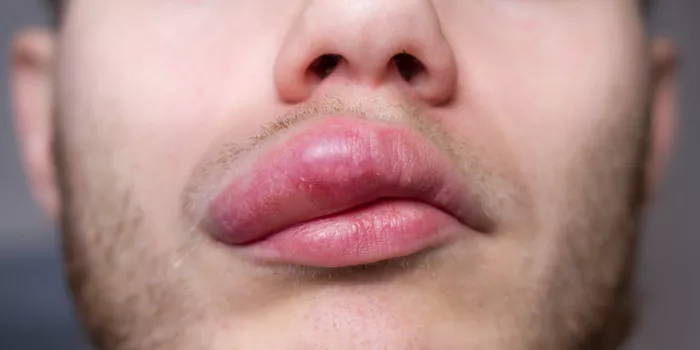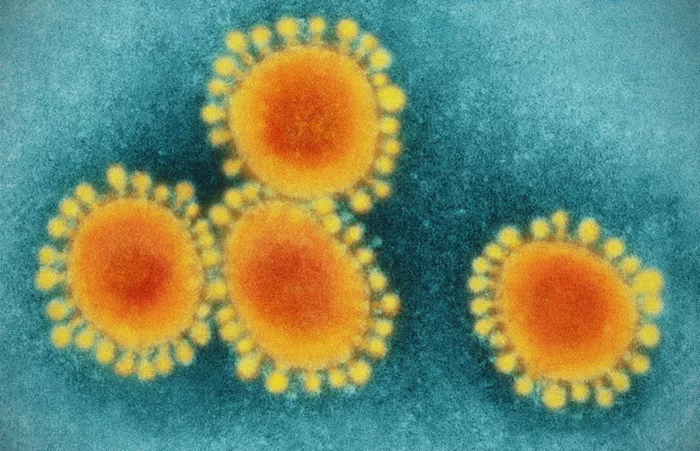Psychological disorders, often referred to as mental health disorders, affect the way individuals think, feel, and behave. These disorders can significantly impact daily life, affecting an individual’s ability to function at work, in social situations, and within personal relationships. Understanding the types of psychological disorders is essential in addressing their symptoms, providing appropriate care, and ensuring individuals receive the necessary support.
This article explores various types of psychological disorders, providing detailed descriptions of each category, their symptoms, potential causes, and available treatments.
1. Mood Disorders
Mood disorders are characterized by persistent disturbances in an individual’s emotional state, affecting their mood, and energy levels, and often resulting in feelings of despair or euphoria. The most common mood disorders include depression and bipolar disorder.
Major Depressive Disorder (MDD)
Major Depressive Disorder (MDD) is one of the most prevalent psychological disorders, with millions of people around the world affected. This disorder leads to a persistent feeling of sadness or a lack of interest in activities once enjoyed. Individuals with MDD may experience low energy, trouble concentrating, changes in appetite and sleep patterns, feelings of worthlessness, and thoughts of death or suicide.
Bipolar Disorder
Bipolar disorder, previously known as manic-depressive illness, involves extreme mood swings. These mood swings include episodes of depression and periods of mania or hypomania (less severe than mania). During manic episodes, individuals may feel extremely energetic, euphoric, or irritable. During depressive episodes, they may experience the opposite, feeling hopeless, lethargic, and overwhelmed.
Cyclothymic Disorder
Cyclothymic disorder is a milder form of bipolar disorder characterized by fluctuations between periods of mild depressive symptoms and hypomanic symptoms. These mood swings may not be as extreme but can still interfere with day-to-day functioning.
2. Anxiety Disorders
Anxiety disorders involve excessive fear, worry, or nervousness. These disorders can result in intense emotional distress and can prevent individuals from participating in everyday activities. The most common types of anxiety disorders include generalized anxiety disorder (GAD), panic disorder, social anxiety disorder, and specific phobias.
Generalized Anxiety Disorder (GAD)
Generalized anxiety disorder is characterized by excessive and uncontrollable worry about a range of everyday issues. Individuals with GAD may find it difficult to relax or control their anxiety, even when there is no immediate threat. Symptoms include restlessness, fatigue, difficulty concentrating, irritability, muscle tension, and sleep disturbances.
Panic Disorder
Panic disorder involves recurrent and unexpected panic attacks, which are sudden periods of intense fear or discomfort. Symptoms of a panic attack include rapid heartbeat, sweating, trembling, chest pain, shortness of breath, and feelings of choking. These attacks can occur without warning and often result in individuals avoiding situations where panic attacks previously occurred.
Social Anxiety Disorder
Social anxiety disorder, also known as social phobia, involves an intense fear of being judged or negatively evaluated by others in social or performance situations. Individuals with social anxiety may avoid social interactions or endure them with significant distress, leading to isolation and a reduced quality of life.
Specific Phobias
Specific phobias are characterized by an intense fear of a particular object or situation, such as heights, flying, or certain animals. The fear is disproportionate to the actual threat posed by the object or situation. People with phobias may go to great lengths to avoid encountering their fear.
3. Obsessive-Compulsive and Related Disorders
Obsessive-compulsive and related disorders (OCRDs) involve repetitive behaviors or thoughts that are difficult to control. These disorders can significantly impair an individual’s ability to function in daily life.
Obsessive-Compulsive Disorder (OCD)
Obsessive-compulsive disorder is characterized by persistent, unwanted thoughts (obsessions) and repetitive behaviors (compulsions) intended to reduce the anxiety caused by the obsessions. Common compulsions include washing, checking, counting, or organizing objects. The disorder can interfere with an individual’s daily activities and relationships.
Hoarding Disorder
Hoarding disorder involves persistent difficulty discarding or parting with possessions, regardless of their actual value. Individuals with hoarding disorder experience significant distress when attempting to get rid of items and often accumulate large amounts of possessions that create clutter and interfere with living spaces.
Body Dysmorphic Disorder (BDD)
Body dysmorphic disorder involves an excessive preoccupation with perceived flaws or defects in physical appearance, which are often not noticeable to others. Individuals with BDD may engage in frequent checking behaviors, such as looking in mirrors or seeking cosmetic procedures, to correct their perceived flaws.
Trichotillomania (Hair-Pulling Disorder)
Trichotillomania is a condition characterized by the recurrent urge to pull out one’s own hair, leading to noticeable hair loss. Individuals with this disorder may feel a sense of relief or pleasure after pulling out their hair but may also experience feelings of shame or embarrassment.
4. Psychotic Disorders
Psychotic disorders involve a disconnection from reality, with individuals experiencing symptoms such as delusions, hallucinations, and disorganized thinking. The most well-known psychotic disorder is schizophrenia.
Schizophrenia
Schizophrenia is a severe and chronic mental health disorder characterized by symptoms such as delusions, hallucinations, disorganized thinking, and impaired functioning. People with schizophrenia may experience difficulty distinguishing between reality and imagination, leading to challenges in social, occupational, and daily functioning.
Schizoaffective Disorder
Schizoaffective disorder involves symptoms of both schizophrenia and mood disorders, such as depression or mania. The individual may experience delusions and hallucinations alongside extreme mood swings. Treatment typically involves a combination of antipsychotic medications and mood stabilizers or antidepressants.
5. Eating Disorders
Eating disorders involve abnormal eating habits that can negatively impact physical health and emotional well-being. The most common types of eating disorders are anorexia nervosa, bulimia nervosa, and binge-eating disorder.
Anorexia Nervosa
Anorexia nervosa is characterized by an intense fear of gaining weight and a distorted body image, leading to restrictive eating and extreme weight loss. Individuals with anorexia may engage in behaviors such as excessively exercising, fasting, or using laxatives. Anorexia can lead to serious health complications, including malnutrition, organ damage, and even death.
Bulimia Nervosa
Bulimia nervosa involves episodes of binge eating, followed by compensatory behaviors such as purging (e.g., vomiting, using laxatives) or excessive exercise to prevent weight gain. These behaviors are often done in secret and can result in physical and emotional distress.
Binge-Eating Disorder
Binge-eating disorder is characterized by recurrent episodes of eating large quantities of food in a short period, accompanied by a lack of control. Unlike bulimia, individuals with binge-eating disorder do not engage in compensatory behaviors, which can lead to obesity and other health complications.
6. Personality Disorders
Personality disorders are characterized by enduring patterns of behavior, cognition, and emotional experience that deviate markedly from the expectations of an individual’s culture. These patterns are inflexible, pervasive, and lead to significant distress or impairment in functioning. There are several types of personality disorders, including borderline, narcissistic, antisocial, and obsessive-compulsive personality disorders.
Borderline Personality Disorder (BPD)
Borderline personality disorder is characterized by instability in mood, relationships, self-image, and behavior. Individuals with BPD may experience intense and rapid mood swings, difficulty with relationships, and fears of abandonment. Self-harming behaviors and impulsivity are also common in BPD.
Narcissistic Personality Disorder (NPD)
Narcissistic personality disorder involves a pattern of grandiosity, need for admiration, and lack of empathy. Individuals with NPD may have an inflated sense of their own importance and struggle to recognize the feelings and needs of others. They may become upset or angry when not receiving the attention or admiration they believe they deserve.
Antisocial Personality Disorder (ASPD)
Antisocial personality disorder is characterized by a disregard for the rights of others, often manifested through deceit, manipulation, and a lack of empathy. Individuals with ASPD may engage in criminal behaviors or be involved in conflicts with authority figures, often without remorse.
Obsessive-Compulsive Personality Disorder (OCPD)
Obsessive-compulsive personality disorder is marked by a preoccupation with orderliness, perfectionism, and control. People with OCPD may be rigid, insist on things being done in a specific way, and have difficulty delegating tasks to others. Unlike OCD, OCPD does not involve obsessions and compulsions.
7. Neurodevelopmental Disorders
Neurodevelopmental disorders are a group of conditions that typically manifest in early childhood and involve developmental deficits that impair the individual’s functioning in various areas, such as cognitive abilities, motor skills, or social interactions.
Autism Spectrum Disorder (ASD)
Autism spectrum disorder is a developmental disorder characterized by difficulties with social communication and repetitive behaviors. Individuals with ASD may exhibit a wide range of symptoms, from mild to severe, and often require specialized support to navigate social and educational environments.
Attention-Deficit/Hyperactivity Disorder (ADHD)
Attention-deficit/hyperactivity disorder involves persistent patterns of inattention, hyperactivity, and impulsivity that interfere with daily functioning. Symptoms include difficulty concentrating, excessive talking or fidgeting, and impulsive behavior. ADHD can affect academic performance, social relationships, and work-related tasks.
Intellectual Disability (ID)
Intellectual disability is characterized by below-average intellectual functioning, often accompanied by limitations in adaptive behaviors such as communication, social skills, and self-care. Individuals with intellectual disabilities may require special education services and other support to manage daily tasks.
8. Trauma- and Stressor-Related Disorders
Trauma- and stressor-related disorders occur as a response to significant stress or traumatic events. These disorders can have long-lasting effects on an individual’s mental and emotional well-being.
Post-Traumatic Stress Disorder (PTSD)
Post-traumatic stress disorder is triggered by exposure to a traumatic event, such as combat, assault, or natural disasters. Individuals with PTSD may experience flashbacks, nightmares, anxiety, and hypervigilance. The disorder can interfere with work, social relationships, and overall quality of life.
Acute Stress Disorder (ASD)
Acute stress disorder occurs in response to a traumatic event but lasts for a shorter period (typically three days to a month). Symptoms may include intrusive thoughts, anxiety, and difficulty sleeping. If symptoms persist, the diagnosis may be revised to PTSD.
Conclusion
Psychological disorders encompass a wide range of conditions that can affect an individual’s emotional, cognitive, and behavioral functioning. Recognizing the different types of psychological disorders is crucial for understanding their impact on individuals and society. Early intervention, proper diagnosis, and treatment can significantly improve the lives of those affected, allowing them to lead fulfilling and meaningful lives. If you or someone you know is experiencing symptoms of a psychological disorder, seeking help from a mental health professional is an important step toward recovery and management.
Related Topics
































